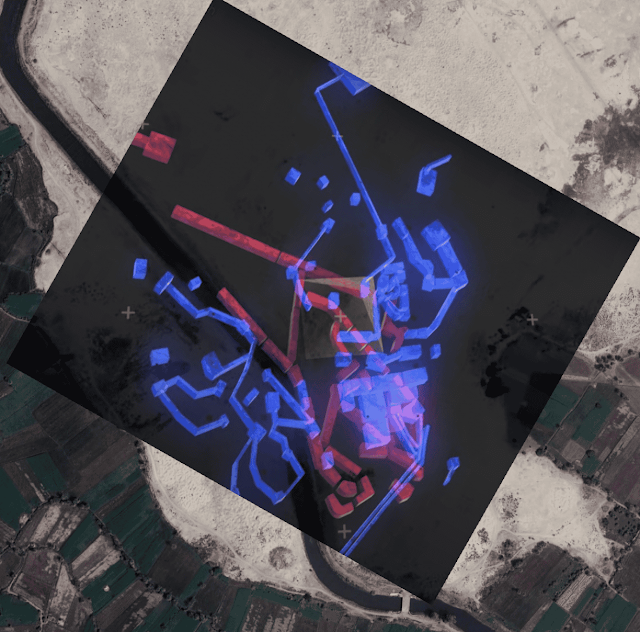Hawara Pyramid: An Amazing Trip in Fayoum
Hawara Pyramid located about 9 kilometers southeast of the ancient city of Crocodilopolis (modern-day Medinet el-Fayum), the Hawara Pyramid stands as a testament to the ingenuity and grandeur of ancient Egyptian civilization. This blog post will guide you through the fascinating history and significance of the Hawara Pyramid, offering insights into why this destination should be at the top of your travel itinerary.
The Historical Significance of Hawara Pyramid
The Builder: Amenemhat III
The Hawara Pyramid was constructed during the reign of Pharaoh Amenemhat III of the 12th Dynasty, around 1850 BCE. Amenemhat III, one of the most influential rulers of the Middle Kingdom, is known for his ambitious building projects and administrative reforms. His reign marked a period of prosperity and stability, during which he commissioned the construction of this pyramid as his final resting place. The Pyramid Structure
The Hawara Pyramid originally stood at a height of 58 meters, with a base length of 105 meters on each side. Unlike the more famous pyramids of Giza, which were built primarily of limestone, the core of the Hawara Pyramid was constructed using mudbrick. This choice of material has contributed to its current state of disrepair, but it also offers valuable insights into the construction techniques and materials used during the Middle Kingdom.
The Labyrinth
Labyrinth .. One of the most remarkable features of the Hawara Pyramid complex was the so-called "Labyrinth." Ancient historians such as Herodotus and Strabo described this structure as an architectural marvel, with countless chambers and passages. The Labyrinth was believed to serve both as a mortuary temple and as a place for various religious and administrative functions. Although much of it is now lost to time, ongoing archaeological efforts continue to reveal its mysteries.
Exploring the Hawara Pyramid
Getting There
Fayoum is conveniently located about 100 kilometers southwest of Cairo, making it an accessible day trip from Egypt's bustling capital. To visit the Hawara Pyramid, you can take a private car or join a guided tour that often includes other attractions in the Fayoum region, such as Lake Qarun and Wadi El-Rayan.
What to Expect
Upon arriving at the Hawara Pyramid site, you'll be greeted by the imposing remnants of what was once a magnificent structure. While the pyramid itself has significantly eroded over the millennia, its grandeur is still palpable. As you explore the area, you'll find fragments of the original casing stones and other artifacts that hint at the pyramid's former glory.
The Burial Chamber
One of the highlights of your visit will be the descent into the burial chamber of Amenemhat III. Although the tomb was plundered in antiquity, the architecture and design of the chamber remain impressive. The chamber was designed to thwart grave robbers, with a series of false passages and dead ends, reflecting the ancient Egyptians' reverence for the afterlife and their determination to protect the pharaoh's final resting place.
The Surrounding Area: More to Explore in Fayoum
Medinet el-Fayum (Crocodilopolis)
After exploring the Hawara Pyramid, take some time to visit the nearby ancient city of Medinet el-Fayum, historically known as Crocodilopolis. This city was dedicated to the worship of the crocodile god Sobek, and you can still find remnants of its past glory, including temple ruins and artifacts that speak to its religious and cultural significance.
Lake Qarun
Lake Qarun, one of the largest natural lakes in Egypt, is another must-visit destination in Fayoum. The lake is a haven for birdwatchers and nature enthusiasts, offering stunning views and a tranquil environment. You can also enjoy a boat ride on the lake or visit the nearby Qarun Palace, an ancient hunting lodge from the Greco-Roman period.
Wadi El-Rayan
For those looking for more adventure, Wadi El-Rayan offers a unique desert experience with its stunning waterfalls and picturesque landscapes. This protected area is perfect for hiking, picnicking, and wildlife spotting, making it a great addition to your Fayoum itinerary.
Practical Tips for Your Trip
Best Time to Visit
The best time to visit the Hawara Pyramid and Fayoum is during the cooler months, from October to April. During this period, the weather is more comfortable for exploring outdoor sites.
What to Bring
When visiting the Hawara Pyramid, it's essential to wear comfortable walking shoes, as the terrain can be uneven. Bring plenty of water, sunscreen, and a hat to protect yourself from the sun. A camera or smartphone will come in handy to capture the incredible sights you'll encounter.
Local Guides
Hiring a local guide can greatly enhance your experience. Knowledgeable guides can provide detailed historical context and share stories that bring the ancient site to life. They can also help you navigate the area more efficiently and ensure you don't miss any key highlights.
The Hawara Pyramid is a hidden gem in the rich tapestry of Egypt's ancient history. Its historical significance, coupled with the allure of the surrounding Fayoum region, makes it a must-visit destination for any traveler interested in the wonders of the past. By exploring the Hawara Pyramid, you'll not only gain insight into the architectural prowess and cultural achievements of the Middle Kingdom but also experience the beauty and tranquility of Fayoum.


























